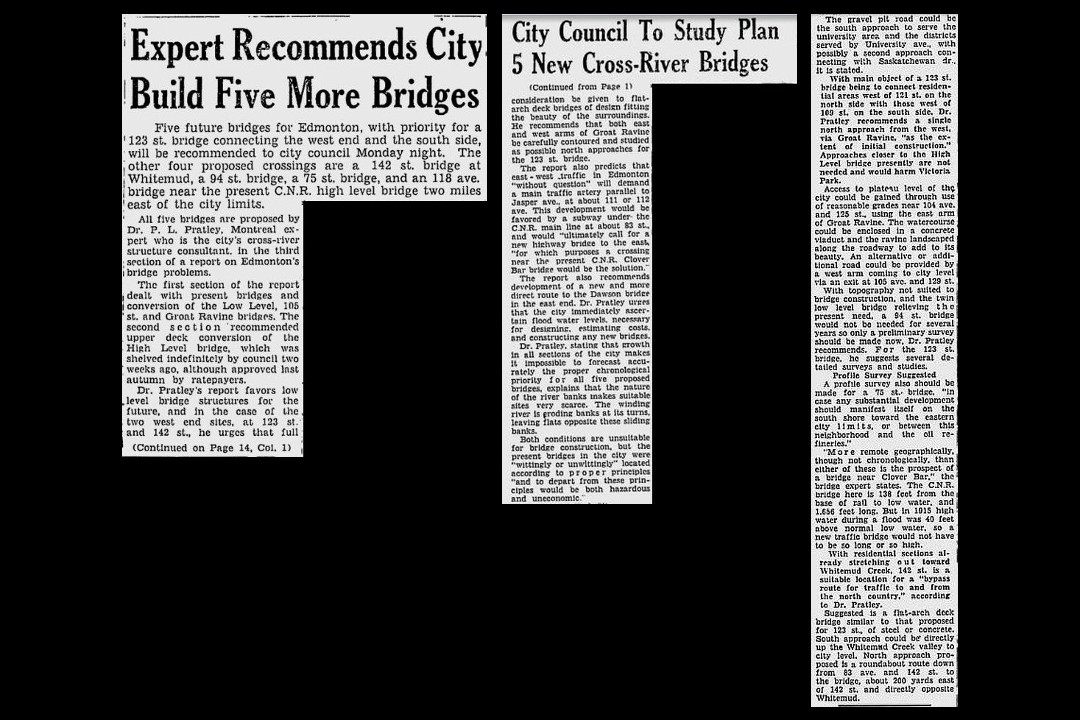On this day in 1950, Edmonton was looking at new ways to span the North Saskatchewan River.
The effort was kicked off by a report recommending five new bridges, issued by P.L. Pratley, who was serving as Edmonton's cross-river structural consultant. When it came to bridges, Pratley knew what he was talking about: the Montreal bridge designer was behind some of the country's best-known crossings, including Vancouver's Lions Gate Bridge and Halifax's Angus L. Macdonald Bridge.
Most urgent, in Pratley's mind, was a bridge that would cross the river at 123 Street. The bridge at Groat Road would be built in this area and opened five years later. But he also saw the growth of residential neighbourhoods in the city's deep west end (growth that would continue into the next decade), and proposed a bridge at 142 Street to connect the north and south sides of the river.
It would be almost two decades, but construction finally started on what would become the Quesnell Bridge in the late 1960s. The five-lane girder bridge cost about $6 million to construct (which would put it at around $51 million in 2024 dollars.) The new bridge was named after the nearby neighbourhood of Quesnell Heights, which was itself named after … someone. There are several possibilities, but no one is exactly sure who.
The bridge was integrated into the new Whitemud Freeway. The predicted growth of Edmonton's west-end neighbourhoods continued into the 1970s and '80s, with the bridge and the freeway serving as a vital link for local traffic. By the 2000s, it had become the busiest bridge in the city, handling around 120,000 cars each day — far more than it was originally designed for.
It wasn't until 2008 that the first major rehabilitation project was done on the then-40-year-old bridge. The project involved adding more lanes, extending the bridge's lifespan, and assessing how it would weather a changing climate.
The rehabilitation wrapped up in 2011. That was also the year the Quesnell Bridge got its most famous and controversial feature — the Talus Dome. The $600,000 art piece formed of stainless steel orbs is a reference to the shape of rock debris in the area before the bridge's construction. The reception was decidedly mixed, both for the sculpture itself and its location alongside a busy freeway. The city defended the decision, citing the location as the entrance to many river valley paths and expressing a desire to avoid concentrating public art in just a few places. (That said, Edmonton now has a new public art strategy that departs from the regime under which the Talus Dome was commissioned.)
Thirteen years after its introduction to Edmonton, the Talus Dome is still one of the city's best-known pieces of public art: some Edmontonians admire it, others ridicule it, and at least one has become trapped inside it.
This clipping was found on Vintage Edmonton, a daily look at Edmonton's history from armchair archivist @revRecluse of @VintageEdmonton.

